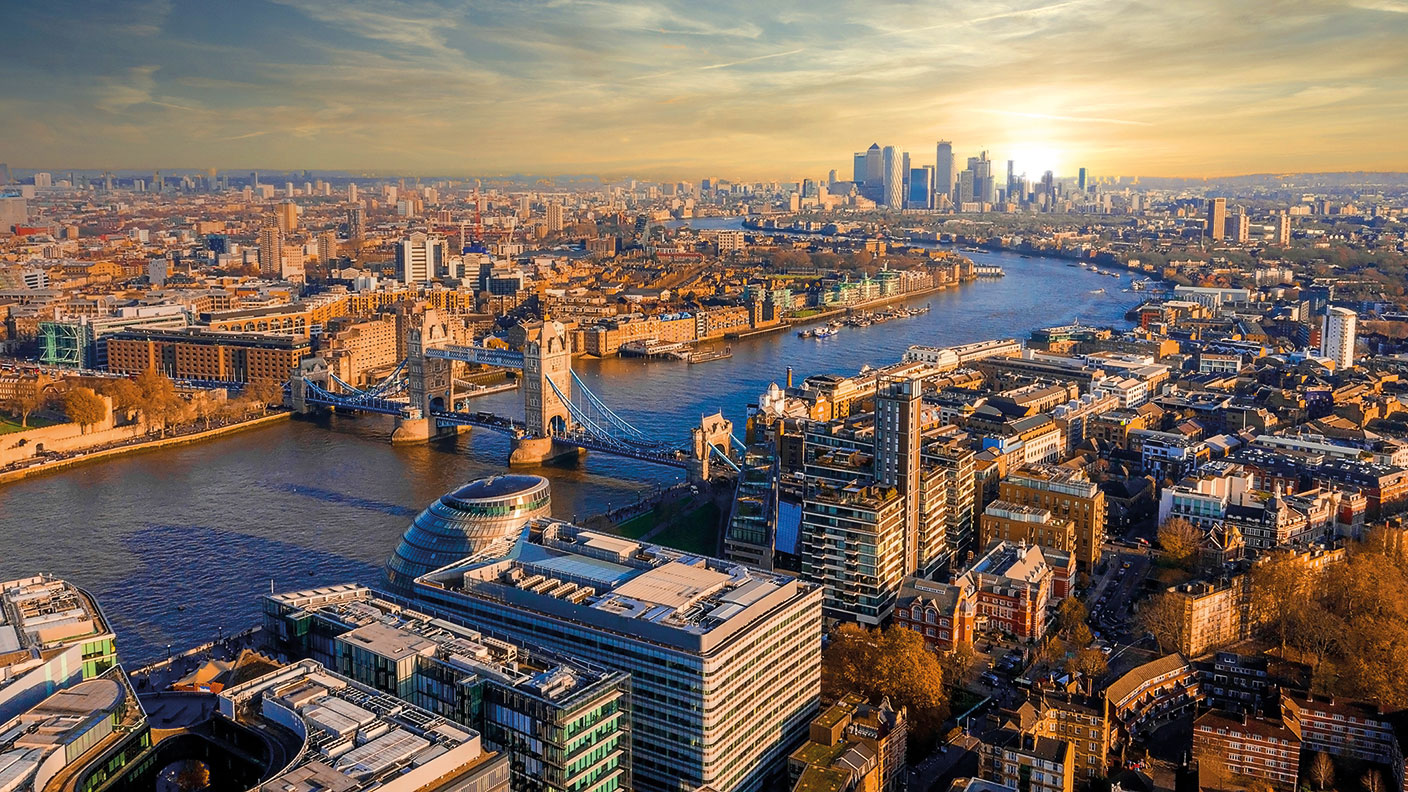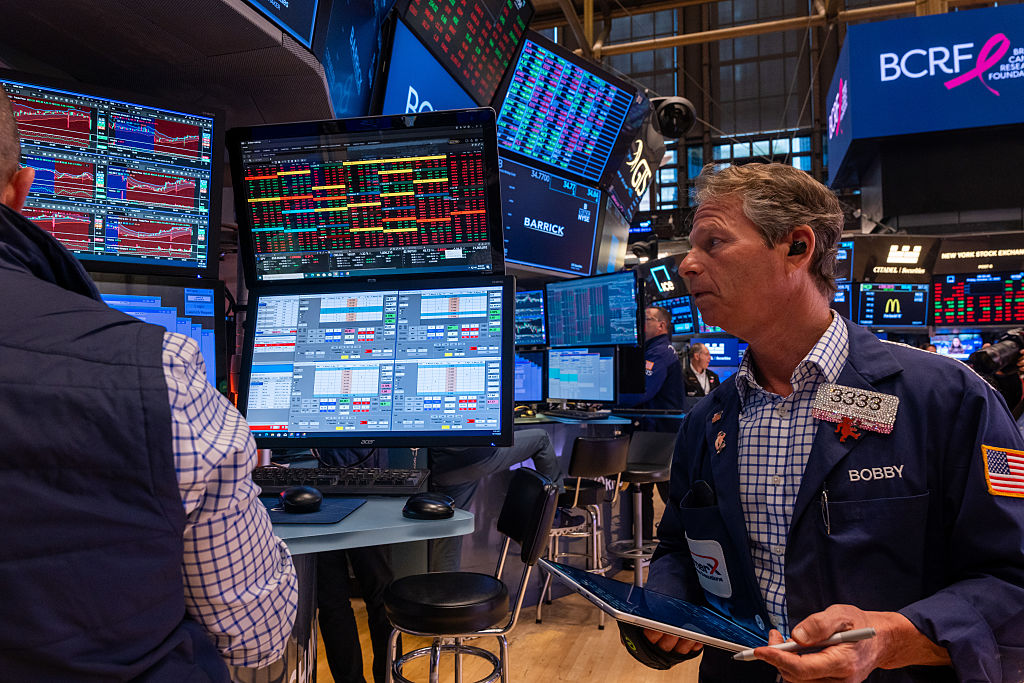The spectre of stagflation shakes stockmarkets
Stockmarkets are getting increasingly jumpy about stagflation, the combination of economic stagnation and high inflation, with America’s S&P 500 down by 4.8% in September and the FTSE 100 by 1%.

“With price increases slamming economies from all directions,” markets are getting increasingly jumpy, says Susannah Streeter of Hargreaves Lansdown. Investors also fret that weakening macroeconomic data could herald a slowdown. No wonder that in recent weeks concerns about stagflation, the combination of economic stagnation and high inflation, “seem to have turned from niggling worries to an anxiety attack”.
Markets have hit a wall
America’s S&P 500 finished September down 4.8%, its worst month since the crash in March 2020. The selling continued into this week, with the technology-focused Nasdaq Composite tumbling by 2.1% on Monday. Highly-valued technology shares are particularly vulnerable to rising interest rates and bond yields (which make bonds more appealing relative to equities). The FTSE’s exposure to commodity stocks has spared it the worst of the sell-off: the index is down by about 1% since the start of September. Yet markets seem gloomy about the outlook for the wider British economy.
Last week the pound tumbled to $1.3441 against the dollar, its lowest level of 2021, notes Philip Aldrick in The Times. That is worrying because the Bank of England is expected to raise interest rates sooner than other central banks, which should be giving sterling a lift. There are signs that UK “growth is flagging” just as energy and food prices soar; British wage growth is “the highest since 2008”.
MoneyWeek
Subscribe to MoneyWeek today and get your first six magazine issues absolutely FREE

Sign up to Money Morning
Don't miss the latest investment and personal finances news, market analysis, plus money-saving tips with our free twice-daily newsletter
Don't miss the latest investment and personal finances news, market analysis, plus money-saving tips with our free twice-daily newsletter
If stagflation takes hold then “the Bank of England can do little about” it, says Chris Dillow in the Investors’ Chronicle. It can raise rates to fight inflation or loosen policy to stop stagnation, but not both. Some of the current inflationary pressure should prove temporary: “labour market mismatches should fade as firms… train new staff”, while the commodity cycle will eventually turn, as it always does. If there is one area for concern, it is that the current shock is exposing Britain’s chronic problem with productivity, which has grown at “just 0.3% per year” over the last 14 years.
Goodbye “Goldilocks”
Global markets have enjoyed a “Goldilocks” environment for much of this year, says Olivier Marciot of Unigestion. That combined “record growth” with easy monetary policy from central banks, both of which boost stocks. But as inflation spikes and central banks rein in support, that favourable alignment of the economic planets has “probably come to an end”, driving the selloff.
Since 2008, investors have lived by “TINA”: “there is no alternative” to investing in stocks, says Jon Sindreu in The Wall Street Journal. The logic goes that whenever the economy takes a hit then central banks will step in with easy money to rescue stocks. So equities always go up. The fear now is that inflation will force central banks to hike rates no matter how much that hurts markets. Yet “every precedent suggests that… officials will course-correct whenever” bond markets throw a big enough tantrum. The recovery could also prove weaker than expected, enabling central banks to keep policy loose. “There is still no alternative” to TINA.
Get the latest financial news, insights and expert analysis from our award-winning MoneyWeek team, to help you understand what really matters when it comes to your finances.
Alex is an investment writer who has been contributing to MoneyWeek since 2015. He has been the magazine’s markets editor since 2019.
Alex has a passion for demystifying the often arcane world of finance for a general readership. While financial media tends to focus compulsively on the latest trend, the best opportunities can lie forgotten elsewhere.
He is especially interested in European equities – where his fluent French helps him to cover the continent’s largest bourse – and emerging markets, where his experience living in Beijing, and conversational Chinese, prove useful.
Hailing from Leeds, he studied Philosophy, Politics and Economics at the University of Oxford. He also holds a Master of Public Health from the University of Manchester.
-
 ‘Why I have ditched my Help to Buy ISA for cash savings and the stock market’
‘Why I have ditched my Help to Buy ISA for cash savings and the stock market’Without the 25% bonus, my Help to Buy ISA is effectively redundant, says MoneyWeek writer Sam Walker.
-
 Is your inheritance tax allowance cut if you sell to downsize or sell your home to pay for care?
Is your inheritance tax allowance cut if you sell to downsize or sell your home to pay for care?Downsizing relief is a little-known benefit that could save your loved ones tens of thousands of pounds in inheritance tax after you’ve died.
-
 Stock markets have a mountain to climb: opt for resilience, growth and value
Stock markets have a mountain to climb: opt for resilience, growth and valueOpinion Julian Wheeler, partner and US equity specialist, Shard Capital, highlights three US stocks where he would put his money
-
 Goodwin: A superlative British manufacturer to buy now
Goodwin: A superlative British manufacturer to buy nowVeteran engineering group Goodwin has created a new profit engine. But following its tremendous run, can investors still afford the shares?
-
 A change in leadership: Is US stock market exceptionalism over?
A change in leadership: Is US stock market exceptionalism over?US stocks trailed the rest of the world in 2025. Is this a sign that a long-overdue shift is underway?
-
 Metals and AI power emerging markets
Metals and AI power emerging marketsThis year’s big emerging market winners have tended to offer exposure to one of 2025’s two winning trends – AI-focused tech and the global metals rally
-
 Leading European companies offer long-term growth prospects
Leading European companies offer long-term growth prospectsOpinion Alexander Darwall, lead portfolio manager, European Opportunities Trust, picks three European companies where he'd put his money
-
 Tetragon Financial: An exotic investment trust producing stellar returns
Tetragon Financial: An exotic investment trust producing stellar returnsTetragon Financial has performed very well, but it won't appeal to most investors – there are clear reasons for the huge discount, says Rupert Hargreaves
-
 How to capitalise on the pessimism around Britain's stock market
How to capitalise on the pessimism around Britain's stock marketOpinion There was little in the Budget to prop up Britain's stock market, but opportunities are hiding in plain sight. Investors should take advantage while they can
-
 London claims victory in the Brexit wars
London claims victory in the Brexit warsOpinion JPMorgan Chase's decision to build a new headquarters in London is a huge vote of confidence and a sign that the City will remain Europe's key financial hub